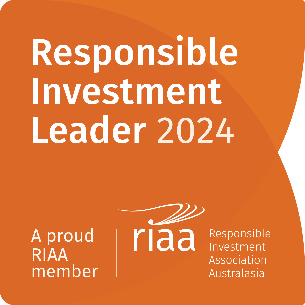November Interest Piece

Global equity markets continued to trade with an elevated level of volatility during November as investors were challenged by slowing global growth and tightening financial conditions. Despite this backdrop the New Zealand exchange was again a relative outperformer. As we head into the conclusion of 2018 with financial headlines full of references to trade wars and political uncertainty, it is important for investors to be aware of the strong fundamentals that have supported our local market in recent times and to understand how these characteristics could influence outcomes in 2019.
Since January 2008, the NZX50 Index has returned over 117%. This performance is impressive in an absolute sense but it should also be considered in a relative context. Over the same period other major markets have also rallied, but not to the same extent. The MSCI World Index (which is the most commonly referenced global equity index) is up 79% whilst our two largest trading partners, Australian and China have generated returns of 50% and 19% respectively. Looking at just the past year, New Zealand has again outperformed. What is also equally important to note though is that since January 2008 our local outperformance has been achieved with a lower level of risk than was evident in many of the other international markets. There are a number of ways to demonstrate this but one of the most popular methods is to compare the different levels of volatility evident in the returns. Over the past eight years, the monthly average standard deviation of returns for the NZX50 Index has been 3.2%. This compares very favourably with Australia’s ASX 200 Index that experienced 3.9%, the US S&P500 Index at 4.3% and the MSCI World Index at 4.6%. The correlation of New Zealand equity market returns in relation to many of the other major global indices was also very low. This period of strong performance, with lower risk and diversification benefit has certainly captured the attention of foreign buyers with their ownership of our market increasing from 33% in 2008 to almost 50% today.
But what is it about our market that has sponsored these outcomes? The NZX50 Index has a range of attributes which separates it from its global peers. At a time when interest rates were driven to record lows, the strong representation on our exchange of businesses that generate sustainable cash flows and pay healthy dividends was a key driver. With a gross dividend yield of 5.6%, investors recognised the opportunity to meet their income requirements through owning domestic shares and they have also enjoyed strong capital growth. With increased demand for sectors such as Infrastructure (eg: Auckland Airport), Utilities (eg: Meridian Energy and Contact) and Real Estate, we have seen increased share prices. Utilities, for example, has seen their sector price-to-earnings multiple grow from 16X in 2013 to 23X this year whilst Infrastructure has increased from 25X to 31X over the same period. These high-yielding sectors now also collectively represent the largest part of our index. Infrastructure has grown from being 8% of the NZX50 in 2013 to now being 10% but even more impressive is Utilities which has grown from 13% to a massive 26%!
This sector make-up has been very influential to the return outcomes of the index but beyond this there are many qualitative strengths which define the New Zealand opportunity set. Our political and legal frameworks, over time, have provided a relatively strong platform for investors and for many of our corporates. A demonstration of this is the strong competitive characteristics that are evident across a number of our larger listed stocks. Businesses such as Fisher and Paykel Healthcare and Vista Group are considered world leaders in the areas in which they operate. Such global positioning creates opportunities to favourably influence their economic outcomes through pricing and scale benefits. Outside of these global champions, the NZX is also well represented by a long list of domestic champions who can be considered with similar competitive characteristics. These include Air New Zealand, Mainfreight, Freightways and Trade Me. What appeals to many investors when they consider these businesses is the likelihood that they will survive and succeed through future business cycles by leveraging off their capital strength and dominant industry positioning.
These attributes, which define much of the NZX50 Index, do unfortunately come with a number of consequences. One is that valuations appear elevated. Price-to-earnings ratios have lifted by almost 70% over the past 5-years and our market does look expensive. This doesn’t necessarily mean that our market will fall though, because if interest rates do not rise as much as many commentators expect and if investors continue to search for quality, as defined by competitive sustainability, then New Zealand remains well positioned. The other challenge though that we need to be aware of, is one that is becoming more evident by the day. The quality of the listed businesses that we have and the pricing volatility that has been evident in recent times is resulting in a large lift in merger-and-acquisition activity. Although there is a short-term lift in returns for the investors that own these stocks, there is a long-term challenge being created by the removal of many of our important index constituents.
We wrote on this topic a number of months ago but the momentum in this space has continued. UBS recently estimated that the value of successful and announced M&A activity in 2018 is now at a greater value than of all the last 5-years combined in New Zealand. Despite valuations and macro-economic uncertainty, well-funded private equity firms and corporates are here to buy. Following closely after the purchase of Restaurant Brands (a dominant operator in the New Zealand fast food industry) by Finaccess Capital, Trade Me is now the target of interest, this time by Apax Partners. Trade Me is a great example of many of the characteristics that we have described above. This business has a dominant competitive position in New Zealand, it generates strong free cash flow and has a healthy balance sheet. These factors together with a strategic understanding by Apax of the leverage that exists for Trade Me to shift classifieds spending online and for yields to increase, means they are a determined buyer. In this environment it is not difficult to list a range of other public companies that must also be of interest to well-funded offshore groups in 2019.
It is sometimes tempting for investors to assume that the opportunities that exist offshore in larger and more diversified markets must be better. It is hard to argue against this view on the grounds of breadth and liquidity but it is equally important to understand what factors have supported the New Zealand market over the past 8-years and why many of these could still remain very relevant as we move into next year. If factors such as cash flow reliability, dividend yields and business quality remain considerations, then our listed stocks will remain of interest to all types of investors. This includes Kiwisaver, which today accounts for over $50bn worth of investment funds and is already a significant purchaser of domestic assets. Kiwisaver is forecast to be potentially at $200bn by 2030.





